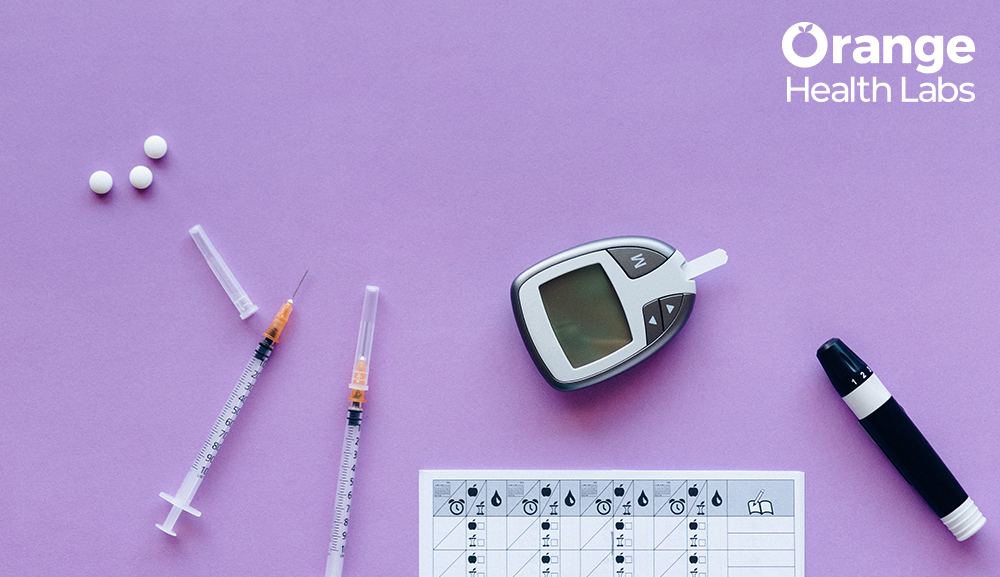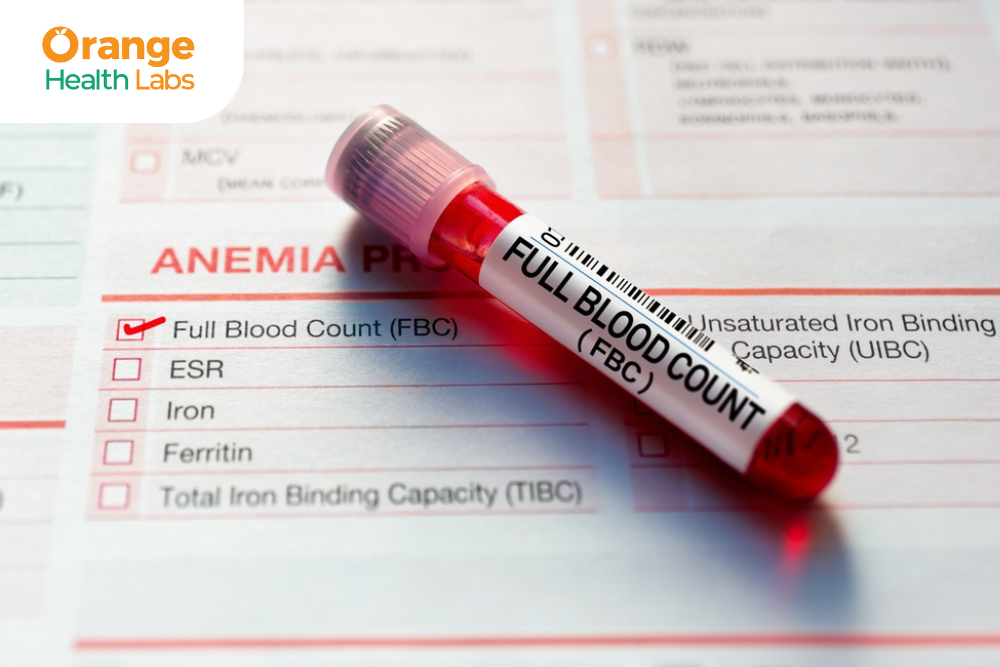Search for tests or checkups
SupportManaging Fasting Blood Sugar Levels: Highs, Lows, and Healthy Range

Diabetes is a lifelong condition in which blood sugar levels are higher than normal. The body's blood vessels, nerves, and other organs could be harmed by these elevated blood sugar levels. The World Health Organization (WHO) reports that the prevalence of diabetes is increasing year over year. This chronic disorder can lead to conditions like heart disease, kidney failure, amputation of the lower limbs, and blindness. The fasting blood glucose level test is a straightforward, secure, and widespread method to diagnose prediabetes, diabetes, or gestational diabetes. This test measures the amount of glucose (sugar) in your system. Maintaining a normal fasting blood sugar level is mandatory for good health.
Let’s understand what fasting blood sugar level test is and how to manage blood sugar levels.
What Is Fasting Blood Sugar?
Fasting blood sugar is a type of blood sugar level test employed to diagnose type 2 diabetes, prediabetes, and gestational diabetes. The symptoms of these conditions do not present initially, leaving individuals unaware that they have high blood sugar. Fasting blood glucose level is usually advised to monitor glucose levels over time, to rule out diabetes. This monitoring is done during pregnancy as well to rule out diabetes caused by hormones (gestational diabetes).
Before the fasting blood sugar level test, you will need to avoid eating or drinking anything (except water) for about 8 hours.
During the test, blood is drawn into a labelled vial by inserting a needle into a vein in the elbow area. Pressure will be applied to stop bleeding, followed by a bandage. Lastly, the blood sample will be sent to a laboratory for testing.
After the test, you may feel slight pain or notice a bruise where the needle was inserted. However, this pain will go away shortly.
What Is the Normal Fasting Blood Sugar Level Range?
Once your fasting blood sugar (FBS) reports are back, your healthcare provider can discuss them with you. The normal fasting blood sugar level range is 99 mg/dL or lower. Values higher or lower than this may be considered unusual.
Fasting blood sugar levels between 100 and 125 mg/dL are prediabetes levels, indicating high fasting blood sugar levels without reaching the diabetes threshold. On the other hand, a fasting blood sugar level of 126 mg/dL or higher signifies high blood sugar, which is a primary indication of diabetes. Low fasting blood sugar level occurs when blood sugar levels fall below the target range, typically below 70 mg/dL for most individuals with diabetes and they may experience symptoms such as shakiness, fatigue, confusion, dizziness, rapid heartbeat, headaches, blurred vision, and even fainting or seizures. Let’s take a look at ways to maintain normal fasting blood sugar levels and stay healthy.
Maintaining Healthy Fasting Blood Sugar Levels
As we know, it is necessary to maintain normal fasting blood sugar levels to lead a healthier life. To maintain healthy fasting blood sugar levels in the long term, follow these guidelines:
- Manage Your ABCs
Understanding and managing your ABCs will help you prevent stroke, heart issues, and other issues arising from diabetes. These ABCs are:
- A for A1C test: The A1C test reflects your average blood glucose level over the past 3 months. The target A1C level is ideally below 7%. You should consult with your healthcare team for your A1C goals.
- B for blood pressure: Most people with diabetes should aim for a blood pressure below 140/90 mmHg.
- C for cholesterol: The two main types of cholesterol are low-density lipoprotein (bad) and high-density lipoprotein (good) cholesterol. High LDL can lead to heart issues as they clog the arteries. You should talk to your healthcare provider to find out what the normal values of cholesterol are and whether you need to take any medicines for the health of your heart.
- S for stop smoking: Non-smoking is vital for individuals with diabetes, as both smoking and diabetes narrow blood vessels, placing a strain on the heart. E-cigarettes are also unsafe for health.
- Regular Checkups
Monitoring and recording your blood sugar levels regularly allow you to tweak your exercise and diet plan accordingly to obtain normal fasting blood sugar levels. Consult your doctor to determine the appropriate frequency for checking your blood sugar.
- Increase Physical Activity
Regular physical activity can help you maintain normal fasting blood sugar levels. Some steps you can take after approval from your doctor are:
- Engage in physical activity for at least 30 minutes daily, five times a week.
- Include muscle-strengthening exercises at least twice weekly.
- Avoid prolonged sitting; break every 30 minutes.
- Choose enjoyable activities like swimming, speed walking, or dancing.
- Eat a Well-Balanced Diet
You should create a diabetes meal plan with the help of your healthcare provider. This will help you manage normal fasting blood sugar level range, blood pressure, and cholesterol levels.
Choose more fruits, vegetables, whole grains, beans, skinless chicken or turkey, lean meats, fish, and low-fat dairy. Drink water and avoid sugary beverages. Pick foods low in calories, saturated fats, trans fats, sugars, and salt.
Managing Blood Sugar Levels At Home
Sometimes, you may experience unprecedented fluctuations in your blood sugar. Here’s what you can do to maintain your blood sugar levels in such circumstances.
To combat low blood sugar, use the 15-15 rule: eat 15 grams of carbs, wait 15 minutes, and recheck your levels. If still low, repeat. Then, maintain levels with a nutritious meal. If your blood sugar is high, take your prescribed medication or insulin.
If your blood sugar is either too high or too low and the cause is unclear, reach out to your healthcare provider.
Book FBS Test Online With Orange Health Labs
With Orange Health Labs, it is now easy to book tests like fasting blood sugar level tests at home. Here are a few quick steps you can follow to book several types of blood sugar tests:
- Go to the “Orange Health Labs” website.
- Choose your location.
- Now, click on “Lab Tests” in the right-hand corner.
- You can then go ahead and select fasting blood sugar level tests or choose a test based on the recommendation of your doctor.
FBS Test in Bangalore | FBS Test in Mumbai | FBS Test in Hyderabad | FBS Test in Noida | FBS Test in Delhi | FBS Test in Gurgaon | FBS Test in Faridabad
Maintaining fasting blood glucose levels within the normal range is crucial for overall health. It reduces the risk of diabetes, heart disease, and other complications. Regular monitoring of glucose/sugar levels and lifestyle adjustments are vital to promoting well-being and preventing long-term health issues.

Your Guide to a Gut-Friendly Diet (What to Avoid!)

How to Interpret Dengue Test Results
